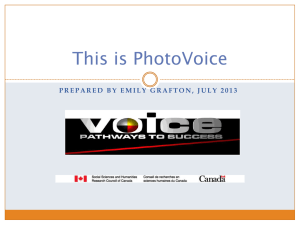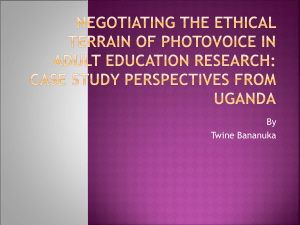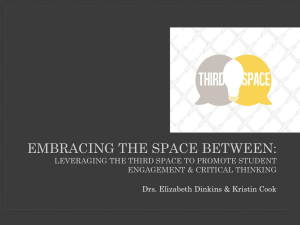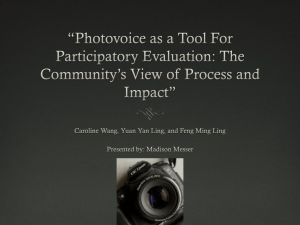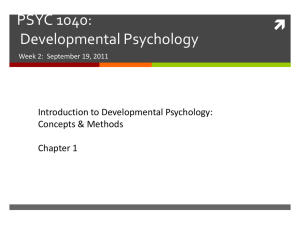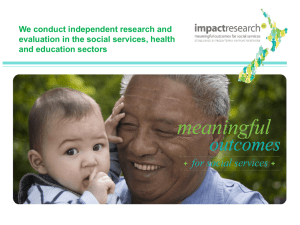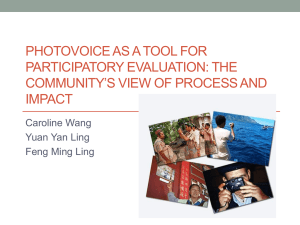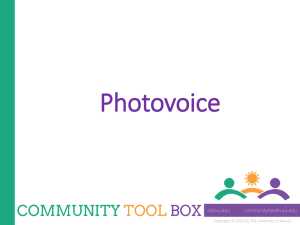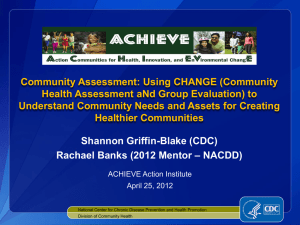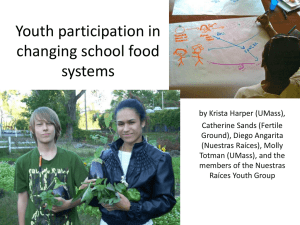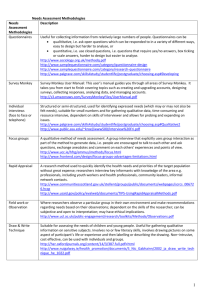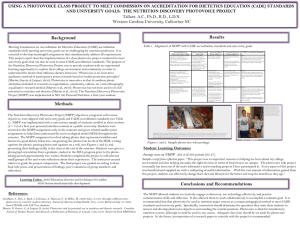View the Slides
advertisement
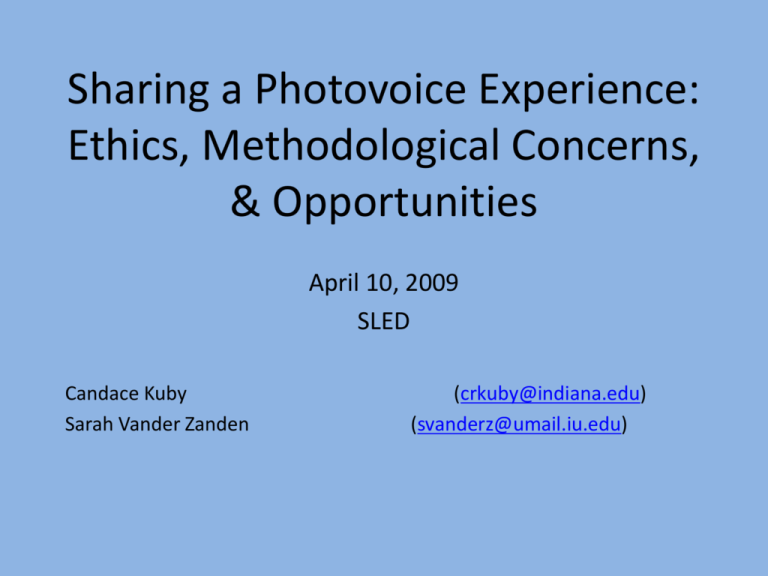
Sharing a Photovoice Experience: Ethics, Methodological Concerns, & Opportunities April 10, 2009 SLED Candace Kuby Sarah Vander Zanden (crkuby@indiana.edu) (svanderz@umail.iu.edu) Outline • • • • Photovoice theoretical underpinnings History of our work with Photovoice Emerging ethical dilemmas Discussion of (Non)Representational Logic Photovoice aims to: 1) enable people to record and reflect their community's strengths and concerns 2) promote critical dialogue and enhance knowledge about issues through group discussions of the photographs 3)inform policy makers http://www.sph.umich.edu/yvpc/projects/photovoice/ Theoretical Underpinnings • Freire-raising critical consciousness • Feminist methodology- collective dialogue, power accrues to those who have voice, set language, and participate in decisions • Community photo documentary/Participatory action research (PAR) - activist photography Photovoice: Related Researchers • Dr. Caroline Wang, School of Public Health, MI • Dr. Mary Ann Burris, Michigan • Wendy Ewald, North Carolina Sampling of Projects Examples: • Youth Violence Project, Flint, MI • Displaced youth reclaiming identity, Columbia • Mental Health initiatives- Michigan • Civic action, women’s initiative-Yunnan Province, China History of our work… Y650 Feminist methodology Photovoice project NCTE 2008, whole day workshop with educators -electronic communication and support for various projects OSU-Expanding Literacies -workshop discussing ethical dilemmas SLED-peer feedback NCTE 2009, panel sharing various Photovoice projects with teachers The Art Show Opening NCTE Research Experience • How do educators navigate their daily experiences in the current educational climate? • Group of NCTE educators from various U.S. cities and Australia (12 people) • We envisioned a photovoice project – instead participants had other ideas. • Wetpaint site & joint gmail account • Plans to present together at NCTE Ethical Dilemmas • How do we share the experience of participants in traditional publication formats? – Technology/gaze, fluidity/stability • How do we communicate cohesion? – Laughter, transformational moments, etc. • Who is privileged? – Selection of photos, transcripts shared, stories, etc. Dilemmas cont. • What happens when goals differ? – NCTE group project vs. individual adaptations • How do we meet academic demands when participants have other needs? – Publishing as a collective, as researchers, etc. Representational Logic “Representational logic over-emphasizes stability, structure, and repetition and underemphasizes the change, diversity, and innovation that are part of literacy in use” (Leander & Rowe, 2006, p. 432). • Focus on meaning – Sameness, themes, stable frames of reference, difference is surprising, break in the “frame” (Goffman) Nonrepresentational Logic “Nonrepresentational logic …carries with it the assumption that literacy in use necessarily involves students generating new ways of connecting texts, modalities, and performed identities” (Leander & Rowe, 2006, 432). • Focus is on experience, performance is not seen as stable, embraces differences and fluidity Example Research Questions Representational Nonrepresentational • What do the photos mean? • What are the themes from the photos/discussion? • What was the photographer’s intention? • What dynamic relationships of bodies, texts, photos, and spaces are being formed as the performance (small group discussion/public forum) unfolds? • What effects do these dynamic relationships have on the Photovoice participants and policy makers? • Where does this dialogue appear to be moving? We invite you to join in the conversation…
